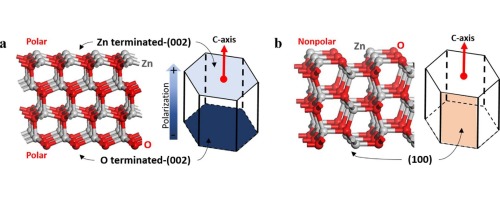当前位置:
X-MOL 学术
›
Nano Today
›
论文详情
Our official English website, www.x-mol.net, welcomes your feedback! (Note: you will need to create a separate account there.)
Facet-dependent photocatalysis of nanosize semiconductive metal oxides and progress of their characterization
Nano Today ( IF 17.4 ) Pub Date : 2018-02-01 , DOI: 10.1016/j.nantod.2017.12.011 Yung-Kang Peng , S.C. Edman Tsang
Nano Today ( IF 17.4 ) Pub Date : 2018-02-01 , DOI: 10.1016/j.nantod.2017.12.011 Yung-Kang Peng , S.C. Edman Tsang

|
Abstract Semiconductive metal oxides are of great importance in environmental remediation and electronics because of their ability to generate charge carriers when excited with appropriate light energy. The electronic structure, light absorption and charge transport properties of the metal oxides have made possible their applications as photocatalysts. Recently, facet-engineering by morphology control has been intensively studied as an efficient approach to further enhance their photocatalytic performance. However, various processing steps and post-treatments used during the preparation of facet-engineered particles may generate different surface active sites which may affect their photocatalysis. Moreover, many traditional techniques (PL, EPR, XPS and Raman) used for materials characterization (oxygen vacancy, hydroxyl group, cation…etc.) are not truly surface specific but the analyses range from top few layers to bulk. Accordingly, they can only provide very limited information on the chemical states of the surface active features and distributions among facets, causing difficulty to unambiguously correlate facet-dependent results with activity. As a result, this always leads to different interpretations amongst researchers during the past decades. In this article, we will review on the controversies generated among researchers, when they correlated the performance of two most popular photocatalysts, ZnO and TiO2 with their facet activities based on characterization from the traditional techniques. As there are shortcomings of these techniques in producing truly facet-dependent features, some results can be misleading and with no cross-literature comparison. This review is also focussed on the new capability of probe-molecule-assisted NMR which allows a genuine differentiation of surface active sites from various facets. This surface-fingerprint technique has been demonstrated to provide both qualitative (chemical shift) and quantitative (peak intensity) information on the concentration and distribution of truly surface features. In light of the new technique this article will revisit the facet-dependent photocatalytic properties and shed light on these issues.
中文翻译:

纳米半导体金属氧化物的小面依赖光催化及其表征进展
摘要 半导体金属氧化物在环境修复和电子领域具有重要意义,因为它们在被适当的光能激发时能够产生电荷载流子。金属氧化物的电子结构、光吸收和电荷传输特性使其作为光催化剂的应用成为可能。最近,通过形态控制的刻面工程作为进一步提高其光催化性能的有效方法得到了深入研究。然而,在小平面工程颗粒制备过程中使用的各种加工步骤和后处理可能会产生不同的表面活性位点,这可能会影响它们的光催化作用。此外,许多传统技术(PL、EPR、XPS 和拉曼)用于材料表征(氧空位、羟基、阳离子等)。) 并不是真正的表面特定,但分析范围从顶部几层到大块。因此,它们只能提供关于表面活性特征的化学状态和小平面之间分布的非常有限的信息,导致难以明确地将依赖小平面的结果与活性相关联。因此,在过去的几十年里,这总是导致研究人员之间的不同解释。在本文中,我们将回顾研究人员之间产生的争议,当他们根据传统技术的表征将两种最流行的光催化剂 ZnO 和 TiO2 的性能与其晶面活性相关联时。由于这些技术在产生真正依赖面的特征方面存在缺陷,因此某些结果可能会产生误导,并且没有跨文献比较。这篇综述还集中在探针分子辅助 NMR 的新功能上,它允许从各个方面真正区分表面活性位点。这种表面指纹技术已被证明可以提供关于真实表面特征的浓度和分布的定性(化学位移)和定量(峰值强度)信息。根据新技术,本文将重新审视依赖于面的光催化特性并阐明这些问题。这种表面指纹技术已被证明可以提供关于真实表面特征的浓度和分布的定性(化学位移)和定量(峰值强度)信息。根据新技术,本文将重新审视依赖于面的光催化特性并阐明这些问题。这种表面指纹技术已被证明可以提供关于真实表面特征的浓度和分布的定性(化学位移)和定量(峰值强度)信息。根据新技术,本文将重新审视依赖于面的光催化特性并阐明这些问题。
更新日期:2018-02-01
中文翻译:

纳米半导体金属氧化物的小面依赖光催化及其表征进展
摘要 半导体金属氧化物在环境修复和电子领域具有重要意义,因为它们在被适当的光能激发时能够产生电荷载流子。金属氧化物的电子结构、光吸收和电荷传输特性使其作为光催化剂的应用成为可能。最近,通过形态控制的刻面工程作为进一步提高其光催化性能的有效方法得到了深入研究。然而,在小平面工程颗粒制备过程中使用的各种加工步骤和后处理可能会产生不同的表面活性位点,这可能会影响它们的光催化作用。此外,许多传统技术(PL、EPR、XPS 和拉曼)用于材料表征(氧空位、羟基、阳离子等)。) 并不是真正的表面特定,但分析范围从顶部几层到大块。因此,它们只能提供关于表面活性特征的化学状态和小平面之间分布的非常有限的信息,导致难以明确地将依赖小平面的结果与活性相关联。因此,在过去的几十年里,这总是导致研究人员之间的不同解释。在本文中,我们将回顾研究人员之间产生的争议,当他们根据传统技术的表征将两种最流行的光催化剂 ZnO 和 TiO2 的性能与其晶面活性相关联时。由于这些技术在产生真正依赖面的特征方面存在缺陷,因此某些结果可能会产生误导,并且没有跨文献比较。这篇综述还集中在探针分子辅助 NMR 的新功能上,它允许从各个方面真正区分表面活性位点。这种表面指纹技术已被证明可以提供关于真实表面特征的浓度和分布的定性(化学位移)和定量(峰值强度)信息。根据新技术,本文将重新审视依赖于面的光催化特性并阐明这些问题。这种表面指纹技术已被证明可以提供关于真实表面特征的浓度和分布的定性(化学位移)和定量(峰值强度)信息。根据新技术,本文将重新审视依赖于面的光催化特性并阐明这些问题。这种表面指纹技术已被证明可以提供关于真实表面特征的浓度和分布的定性(化学位移)和定量(峰值强度)信息。根据新技术,本文将重新审视依赖于面的光催化特性并阐明这些问题。



























 京公网安备 11010802027423号
京公网安备 11010802027423号